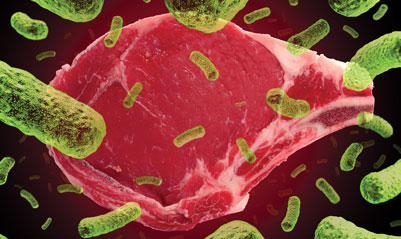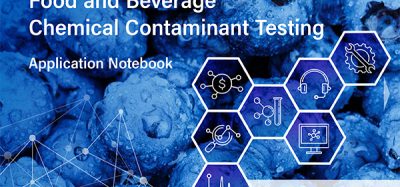Microbiological criteria and testing: Dos and don’ts
- Like
- Digg
- Del
- Tumblr
- VKontakte
- Buffer
- Love This
- Odnoklassniki
- Meneame
- Blogger
- Amazon
- Yahoo Mail
- Gmail
- AOL
- Newsvine
- HackerNews
- Evernote
- MySpace
- Mail.ru
- Viadeo
- Line
- Comments
- Yummly
- SMS
- Viber
- Telegram
- Subscribe
- Skype
- Facebook Messenger
- Kakao
- LiveJournal
- Yammer
- Edgar
- Fintel
- Mix
- Instapaper
- Copy Link
Posted: 27 October 2014 | François Bourdichon, Corporate Food Safety, Microbiology and Hygiene Manager, Barry Callebaut | No comments yet
Following the food scandals of the late-1980s and early-1990s, and the increasing knowledge on foodborne and waterborne pathogen, the Agreement on the Application of Sanitary and Phytosanitary Measures (SPS) was put in place in 1995 to set the framework of all measures taken by a World Trade Organisation (WTO) member to protect human, animal or plant life or health within its territory from certain risks, and which may affect international trade.


These measures that WTO members apply, are classified as sanitary (relating to human or animal life or health) or phytosanitary (relating to plant life or health). The SPS agreement requires WTO members to base their SPS measures on a risk assessment, in order to achieve their expected Appropriate Level of Protection (ALOP).
The microbiological safety of foods is managed by the effective implementation of control measures that have been validated, where appropriate, throughout the food chain to minimise contamination and improve food safety. In order to validate the control measures in place and to answer to the public health protection objectives, metrics are defined on this risk-based approach. While microbiological criteria were initially based on end product acceptance, new microbial risk management metrics have been proposed by the International Commission on Microbiological Specifications for Food (ICMSF) for the establishment of a more direct relationship with public health outcomes, from the Food Safety Objectives (FSO) to the Process Criterion to answer the new framework of the SPS agreement.
These metrics are meant to build a preventive approach, which is expected to offer more advantages than sole reliance on microbiological testing through acceptance sampling of individual lots of the final product to be placed on the market. Microbiological criteria are however still appropriate for verifying that food safety control systems are implemented correctly, although they should not be the only measures in place for risk management decision making4,11.
A dedicated process of developing and expressing microbiological criteria must be followed to prepare specifications that are technically correct, consistent, and suited to the purpose for which they have been established10. This begins with the use of a standardised format which includes identified parameters (sampling), established microbial limits and definition of the analytical method.
Microbiological criteria: The Codex Definition
Microbiological specifications were initially introduced at border controls by national authorities for products with unknown history, i.e. not considering the food safety practices along the process.
With the introduction of HACCP in the mid-1980s and the implementation of control measures in rationalised food safety management systems, most of the microbiological specifications appeared outdated, sometimes even inappropriate.
A new hazard-based approach was therefore discussed and led to the second edition of establishment of microbiological criteria as defined by Codex in 1997, yet omitting the emerging risk based approach of the SPS agreement and newly proposed microbial risk management metrics by the ICMSF and incorporated in the Codex Alimentarius documents on risk management3,8,9.
The updated 2013 concept of microbiological criteria takes into consideration the science-based approach of risk management, decision where risk analysis has been performed to implement the most appropriate control measures possible and their means of validation/verification (Figure 1).
The new definition proposes the following set5: “A microbiological criterion is a risk management metric which indicates the acceptability of a food, or the performance of either a process or a food safety control system following the outcome of sampling and testing for microorganisms, their toxins/metabolites or markers associated with pathogenicity or other traits at a specified point of the food chain.”
A traditional metric within the ICMSF/Codex Risk management
Conceptual Approach
Three different types of criteria are classically used in the food industry:
Microbiological standard
A criterion is part of a law or regulation. It is mandatory and enforceable by the regulatory agency having jurisdiction (initial 1980s approach).
Microbiological guideline
Established by a regulatory authority, industry trade associations or a company to indicate what can be expected when best practices are applied. Guidelines are usually advisory and can be used to monitor the control over a process.
Microbiological specification
A criterion used by buyers of foods or ingredients to determine their acceptability and to verify compliance of products, i.e. to confirm the efficacy of the preventive measures GMP/GHP and HACCP.
Microbiological specifications are defined and used to verify compliance of:
Finished products
Specifications are used to verify adherence to GMP/GHP and HACCP. They are used either for monitoring or release purposes, depending on the microorganism of concern.
Raw materials and ingredients
Specifications are used to express the requirements to a supplier and to decide on acceptance or rejection of the purchased material. The mere establishment of microbiological specifications does not mean, as frequently believed, that every single lot of ingredients (or of finished product) has to be analysed. The frequency of testing shall be based on the level of trust between supplier and customer, based on the historical set of data. Reinforcing the sampling parameters (stringency of testing) without implementation of new control measures does not make one food safer; it just raises the number of refused batches.
Microbial Limits: m, M
The knowledge of distribution of microorganisms in a food (their spatial distribution) is one essential parameter for informing food safety management decision-making (for lot acceptance or for process control) using the value of the data on prevalence and/or concentration.
In the absence of exact knowledge, generalising assumptions are often made as to the nature of the distributions. Three scenarios of spatial distributions are commonly considered for initial contamination of a food product1:
- Regular distribution (purely hypothetical)
- Uniform random distribution (most commonly considered)
- One cluster distribution of a contaminant in a food batch (for a specific process such as clumps of Salmonella spp. in low moisture foods).
Microbiological limits m and M separate conforming from non-conforming analytical units. Since m and M are microbial levels, they are expressed as Colony Forming Units. They are usually expressed per gram, but in certain cases per 10g or 25g (or mL).
These values reflect the implementation of GHP and HACCP. Lot variability should also be taken in consideration as proposed probability of density can vary during the lifetime of one food process (this is valid for raw material, intermediary and end product).
All those limits can be established by following the ICMSF Conceptual Approach (Figure 2), where the limit in the end product are based on the initial prevalence (H0), an eventual reduction step (ΣR) and potential increase (ΣI) during the process (ΣI= ΣG + ΣC – Growth in the product and Contamination from the environment).
Sampling limits: n, c
‘n’ defines the number of samples which need to be analysed from a given batch and ‘c’ defines the number of samples allowed between m and M. The selection of n and c depends on the desired stringency (probability of rejection of analysed lot and power of discrimination) of the sampling plan. Expected stringency for same food product shall be changed depending on the end user or consumer, for example, products for infants will require more stringent sampling plans as products for healthy adults.
At international level, the choice of n is usually based on the 15 cases defined by ICMSF (Table 1). For stringent cases, n is high; for lenient n is low.
Operating characteristic curves
The combination of the different parameters (n, c, m and M) included in a specification reflects only a probability of detection of a defective lot. In other words, it establishes the performance of a sampling plan2.
The statistical performance of a sampling plan is usually illustrated by its Operating Characteristic Curve, which describes the probability of acceptance as a function of the actual proportion of nonconforming analytical units or concentration of the microorganisms in the food.
The producer’s risk corresponds to the probability to reject a lot having a proportion of defective items (generally low), fixed by the sampling plan. The consumer’s risk corresponds to the probability to accept a lot having a proportion of defective items (generally low), fixed by the sampling plan.
The established n and c values are therefore the outcome of a benefit risk management decision between producer’s risk and consumer’s risk, between fair trade practices and ensuring global public health. As such, the number and size of analytical units should be those stated in the sampling plan and should not be modified where the MC has been established for regulatory compliance.
Retesting and subdividing: Why this is (very) bad practice
Retesting of production lots in which the presence of pathogens have been detected or which have exceeded the limits of the detailed examination is, under microbiological (heterogeneity of contamination) and regulatory (responsibility of the food business operator) considerations, completely irrelevant and not acceptable.
It’s a definitive bad decision to challenge a positive product through retesting. Unless the result proves to be invalid (resulting from a laboratory error), retesting the product will most probably result with a negative result, due to the low probability of detection (or one has a very serious issue)7.
A positive will always be a positive; a negative will never be a negative, but shall only help to conclude a reasonable acceptable level of safety of one food product has been achieved.
Corrective actions
In situations of non-conformance with the microbiological specifications (unsatisfactory results), actions to be applied should include corrective actions related to the purpose of the testing. Based on a root cause analysis, a re-evaluation of the efficacy of the food safety control system and operational procedures to determine appropriate preventive actions shall be taken.
In the event of a non-conformance with a microbiological criterion for a foodborne pathogen, actions should include appropriate product containment and disposition. This may include further processing, diversion to an alternate use, withdrawal and/or recall, rework, rejection or destruction of product.
Following this food safety incident, specific cleaning procedure, extensive pathogen environment monitoring, more frequent sampling of finished products, inspection and audits, suspension of operations should be considered among different possibilities.
Conclusion
Routine microbiological testing can be useful for surveillance purposes and process verification, and sometimes helpful for lot acceptance (Figure 3). However, microbiological testing of finished product can be misleading, and negative test results are not enough to ensure food safety. Statistical limitations of microbiological testing are of significant concern, especially when the rate of contamination is very low. As the defect rate in the product becomes low, emphasis should shift to improving the implementation of food safety management strategies rather than relying on microbiological testing solely6.
International Commission on Microbiological Specifications for Foods (ICMSF)
ICMSF was formed in 1962 through the action of the International Committee on Food Microbiology and Hygiene (ICFMH), a committee of the International Union of Microbiological Societies (IUMS).
ICMSF is a leading source for independent and impartial scientific concepts to be adopted by governmental agencies and industry. Its activities are:
- To assemble, correlate, and evaluate evidence about the microbiological safety and quality of foods
- To consider whether microbiological criteria would improve and assure the microbiological safety of particular foods
- To propose, where appropriate, such criteria
- To recommend methods of sampling and examination
References
- Impact of Microbial Distributions on Food Safety. Bassett, 2010. ILSI Europe Report Series. http://www.ilsi.org/Europe/Publications/Microbial%20Distribution%202010.pdf
- General guidelines on sampling. CAC/GL 50-2004
- Principles and guidelines for the conduct of microbiological risk management (MRM). CAC/GL 63-2007
- Guidelines for the validation of food safety control measures. CAC/GL 69 – 2008
- Principles and guidelines for the establishment and application of microbiological criteria related to foods. CAC/GL 21 – 1997 (Revised 2013)
- Microbial risk assessment guideline – pathogenic microorganisms with focus on food and water. Interagency Microbiological Risk Assessment Guideline Workgroup, Environmental Protection Agency and Food Safety and Inspection Service, July 2012.
- Determination of operating characteristic, retesting, and testing amount probabilities associated with testing for the presence of Salmonella in foods. McClure, F.D., Lee, J.K., 2011. J. AOAC Int. 94(1):327-34.
- Food safety objectives—role in microbiological food safety management. Stringer, M., 2005. Food Control 16 775 – 94
- Relating microbiological criteria to food safety objectives and performance objectives. Van Schothorst, M., Zwietering, M.H., Ross, T., Buchanan, R.L., Cole, M.B., ICMSF, 2009. Food Control 20 967 – 79
- What risk assessments can tell us about setting criteria. Whiting, R.C., 2011. Food Control 22 1525 – 28
- Validation of control measures in a food chain using the FSO concept. Zwietering, M.H. , Stewart, C.M., Whiting, R.C., ICMSF, 2010. Food Control 21 1716 – 22
About the author
François Bourdichon is Corporate Food Safety, Microbiology and Hygiene Manager for Barry Callebaut. Microbiological specifications remain a key topic of discussion with both suppliers and customers. François is also a member of New Food’s editorial board.







